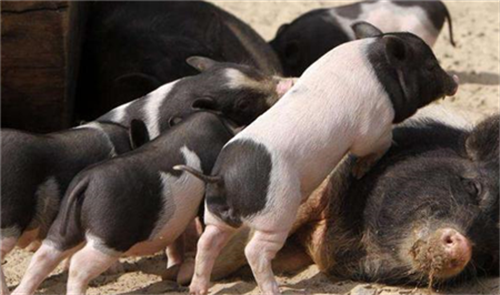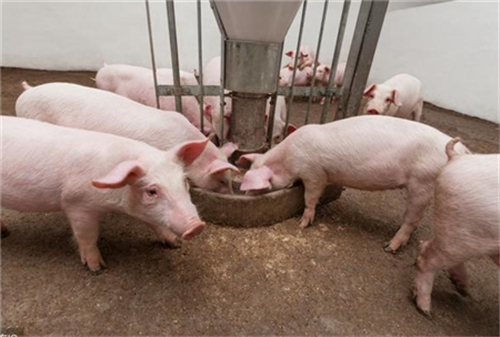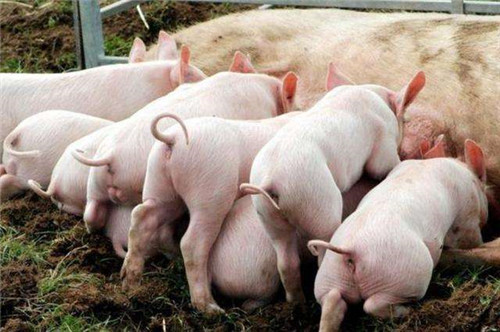Ring, ring again! The pig farm detection rate is as high as 100%. How to solve it?
At present, porcine circovirus disease is still one of the main infectious diseases that harm breeding and production, especially weaned piglets.
According to relevant statistics, the detection rate of the disease in pig farms is 100%, and its harmfulness can be imagined. The incidence of circovirus disease is so high, but until now, there are still many farmers who have not attracted enough attention.
In the process of pig production, no matter how the farm management is, there will be some unpredictable diseases. In particular, the level of feed nutrition and feeding management of some farmers can not keep up, coupled with the high-dose and over-dose vaccination of some vaccines and the unreasonable use of antibiotics, resulting in the decline of the health status and immune function of pigs, and pigs are becoming more and more difficult to raise. The incidence and cure rate of pig disease are becoming more and more difficult to control, so the prevention and control of circovirus is an important work of pig farms.
Circovirus infection can cause immunosuppression in pigs, which makes the body more likely to be infected with other pathogens, which is also related to the mixed infection of circovirus and many diseases in pigs.
The most common mixed infections are ring, blue ear, parasigs, streptococcus, ring, blue ear, asthma, ring, blue ear, wheezing, chest transmission, pseudorabies. The case fatality rate of diseased pigs is as high as 25% to 40%.
1. Clinical manifestations:
1. Piglet multiple system wasting syndrome
The age of onset was 40-60 days old or 80-120 days old. The most common is progressive weight loss or growth retardation in pigs. Dyspnea characterized by anorexia, depression, retardation, pale skin, dishevelled coat, dyspnea, and cough. The less common symptoms are diarrhea and disorders of the central nervous system.
Superficial lymph nodes on the body surface are enlarged and swollen lymph nodes can sometimes be touched, especially superficial inguinal lymph nodes; anemia and visual mucosal jaundice. The main lesions were speckled lungs, rubber lungs and enlarged lymph nodes.
In poor ventilation, overcrowding, air pollution, mixed culture and infection with other pathogens and other factors, the disease is significantly aggravated, the general case fatality rate is 5% to 30%.

2. Porcine dermatitis nephritis syndrome
The age of onset was 50-70 days old. Skin erythema or papules, limbs and abdomen are the most common. It can also develop to the chest, waist, back and ears. Morbidity and mortality are generally about 1%.
The main lesions were renal enlargement with white necrotic foci on the surface.
3. Symptoms of congenital tremor
The muscles of piglets trembled after birth, disappeared after lying down or sleeping, and relapsed after waking up. Survival can be restored after sucking for a week. Some pigs cannot recover and continue to tremble throughout the growing and fattening period.
Special attention: the disease is usually infected with Haemophilus parasuis. In clinical anatomy, pleurisy, chest wall adhesion, cellulose exudation, pulmonary hemorrhage (spots, spots, patches), abscess, pericarditis, pericardial fluid increase. Peritonitis, abdominal cellulose exudation, arthritis.
Second, prevention and control measures:
1. Immunity
On the basis of the ring vaccine, do a good job in the immunity of blue ear (according to the situation of pig farm), pseudorabies and panting vaccine.
2. Reduce stress
The way of factory breeding may be related to the disease. Poor feeding and management, bad weaning environment, mixed herds of pigs from different sources and ages, high feeding density and stimulation of piglet immune system are all important risk factors of this disease.
3. Temperature
When the disease is found in piglets and growing pigs, the temperature in the house should be 25-30 °C.
3. Nutrition:
Provide highly nutritious feed. Nursery pigs are fed with trough feed and growing pigs are fed with nursery feed. Feed less frequently, the porridge is the best, and the powder is the worst. Prevention and treatment of secondary infection, dehydrated pigs drink electrolytic multi-dimensional, rehydration salt.
Congenital tremor to prevent crushing to death, special care, to ensure that each pig is fed, can reduce mortality.
IV. Management:
Establish and improve the biosafety system of pig farms, do the disinfection and hygiene work in every link, and minimize the pollution of pathogenic microorganisms in pig farms.
In order to reduce the feeding density, the foster care of piglets should be limited to within 24 hours after birth, to prevent piglets from different sources, different parities and different ages from being mixed together, and to reduce and eliminate the secondary infection of pigs, so as to control or reduce the chance of piglets infected with circovirus.
- Prev

Why are weaning piglets prone to diarrhea? These preventive measures are simple and effective.
Why are weaning piglets prone to diarrhea? These preventive measures are simple and effective.
- Next

25 countermeasures for comprehensive prevention and control of diarrhea in piglets are indispensable.
25 countermeasures for comprehensive prevention and control of diarrhea in piglets are indispensable.
Related
- On the eggshell is a badge full of pride. British Poultry Egg Market and Consumer observation
- British study: 72% of Britons are willing to buy native eggs raised by insects
- Guidelines for friendly egg production revised the increase of space in chicken sheds can not be forced to change feathers and lay eggs.
- Risk of delay in customs clearance Australia suspends lobster exports to China
- Pig semen-the Vector of virus Transmission (4)
- Pig semen-the Vector of virus Transmission (3)
- Five common causes of difficult control of classical swine fever in clinic and their countermeasures
- Foot-and-mouth disease is the most effective way to prevent it!
- PED is the number one killer of piglets and has to be guarded against in autumn and winter.
- What is "yellow fat pig"? Have you ever heard the pig collector talk about "yellow fat pig"?

